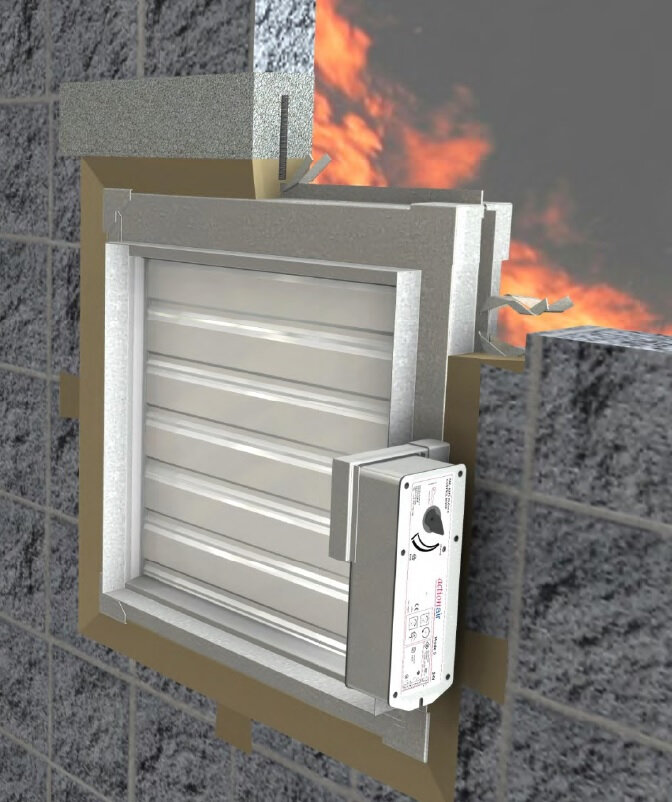A fire damper is a passive fire protection system that is installed in ventilation openings, ductwork or where there is a fire-resistant wall in a property to prevent fire and smoke spreading. By closing off ventilation pathways, fire dampers help contain fire and smoke within specific areas of a building, thereby slowing down the spread of fire and providing occupants with more time to evacuate safely. Fire dampers are typically found in factories, hospitals, retail and commercial premises, schools and offices.
How do fire dampers work?
Some fire dampers are equipped with a fusible link. When the temperature in the ductwork reaches a certain temperature the fusible link melts and activates the damper. This triggers the closure mechanism, causing the damper blades to close and seal off the ductwork, preventing the spread of fire and smoke.
Some advanced fire dampers are connected to smoke detectors. When smoke is detected in the ductwork the smoke detector sends a signal to the damper control system, which then activates the closure mechanism, causing the damper to close and prevent the passage of smoke.
The importance of fire damper maintenance and servicing:
Fire dampers need maintaining in accordance to Regulatory Reform Order 2005. To ensure a fire damper works effectively they should be serviced annually, testing should be more frequent in high risk environments such as hospitals. A faulty fire damper will not prevent the spread of fire which can be critical.
A fire damper test requires both a visual inspection and a drop test. A drop test checks the device operates correctly when activated. The engineer will manually trigger the thermal element which allows the testing of the device. All fire dampers should close fully when released. Any delay can impede the enclosure of a fire within a room.
A visual inspection of a damper includes:
- checking fire damper installation locations
- inspecting the damper to check it has correct installation
- checking for any corrosion or damage to the damper
- checking for any obstructions that may prevent the fire damper working correctly when activated.
- checking for any repairs required to the surrounding wall or ductwork that would affect the fire resistance
Fire dampers play a critical role in containing the fire as it allows occupants to evacuate safely and provides the firefighters better control. Here at total safe our cost of service varies. This depends on the type of damper and how many there are.

